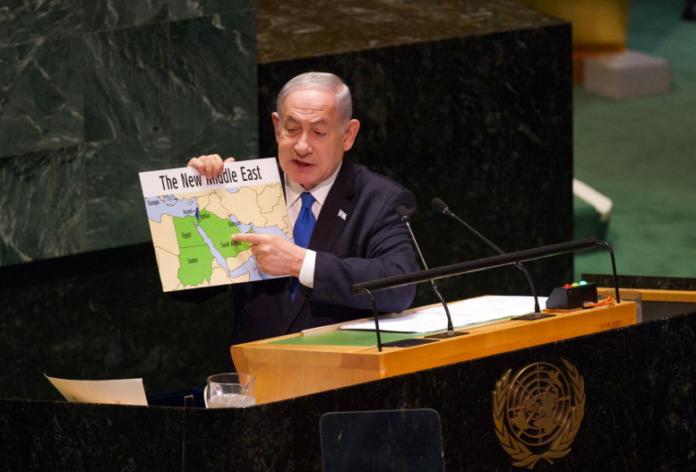Netanyahu while addressing the 78th United General Assembly at UN headquarters in New York city ,September 22, emphasized that the tyrants in Tehran pose a significant threat not only to Israel but also to the stability of the entire region. He stressed the importance of recognizing this danger and urged for collective action to counter their destructive influence. Additionally, he highlighted that Israel’s relations with Arab states should be determined based on its own national interests and security concerns, rather than being subjected to the veto power of the Palestinians.
“We are at the cusp of an even more dramatic and historic peace between Israel and Saudi Arabia,” Netanyahu said during the high-level session that marks the opening of the 78th General Assembly. Netanyahu emphasized that the growing diplomatic ties between Israel and Saudi Arabia are a testament to the changing dynamics in the Middle East. He expressed optimism about the potential for this peace agreement to bring stability and prosperity to the region. Netanyahu expressed optimism for the future, stating that this potential peace agreement could have far-reaching implications for the entire Middle East region. However, he stressed that it is crucial for Iran’s nuclear threat to be effectively addressed and neutralized in order to ensure long-term stability in the region.
“Such a peace will go a long way to ending the Arab-Israeli conflict. It will encourage other Arab states to normalize their relations with Israel. It will enhance the prospects of peace with the Palestinians,” Netanyahu said.
In order for the audience to better comprehend the historic change that was about to take place, Netanyahu, who has a history of using props at the UN, held up two maps of Israel and the region. As he pointed to the maps, Netanyahu emphasized the significance of the upcoming peace agreement, highlighting how it would reshape the geopolitical landscape of the region. “Here’s Israel in 1948. It’s a tiny country, isolated, surrounded by a hostile Arab world. In our first seventy years, we made peace [only] with Egypt and Jordan,” Netanyahu said. Then he showed up a contemporary map that already depicted the transformation that took place in 2020 once Israel normalized relations with four of its Arab neighbors as part of the Abraham Accords, which were supported by the US, as well as what may happen if Saudi Arabia joined that circle. He pulled out a red marker and surrounded those nations with a circle. “The whole Middle East changes. We tear down the walls of enmity. We bring the possibility of prosperity and peace to this entire region,” Netanyahu said. He recalled that he had drawn attention to the danger of an Iranian nuclear program at the UN General Assembly using the same red marker.
- Disclaimer: To the best of the author’s knowledge, this article is accurate and true. Content should not be used as a substitute for consulting with a lawyer or other qualified advisor in topics of business, finances, law, or technology. It is only for informational or entertaining reasons







